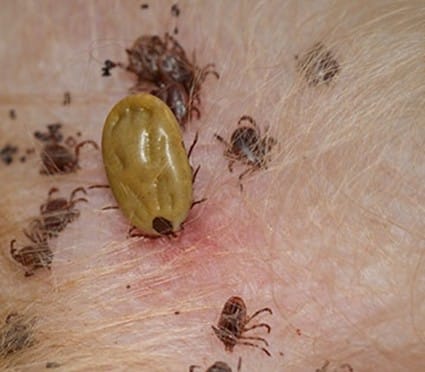Chihuahua Reports 92 Cases and 44 Deaths from Rickettsiosis — Health Ministry Continues Epidemic Surveillance
60% of infections are concentrated in Chihuahua City and Ciudad Juárez
Chihuahua, October 29, 2025. — The Chihuahua State Health Department reported that, as of Monday, October 27, 92 cases of rickettsiosis —a disease transmitted by the bite of infected ticks— have been confirmed in various municipalities of the state, with a total of 44 deaths recorded during 2025.
According to the most recent epidemiological report, the municipalities with the highest incidence are Chihuahua, with 45 cases, and Ciudad Juárez, with 36, representing more than 80% of the state total. Infections have also been reported in Meoqui (5), Delicias (3), and Ascensión (1).
Most Affected Population: Children and Youth
The analysis by the Ministry of Health indicates that the child and youth population is the most affected:
- 33 cases correspond to the 5 to 14 year age range,
- 12 to the 1–4 year old group,
- and 10 to those aged 15 to 24.
There are also 19 cases reported in people aged 25 to 44, 16 in the 45 to 64 age group, and 2 cases in adults over 65 years of age.
These data reflect that the disease continues to impact both children and adults of working age, sectors that are especially vulnerable due to exposure to environments with ticks, particularly in rural and peri-urban areas.
Mortality: Highest in Chihuahua and Juárez
Of the 44 deaths recorded, 27 occurred in the municipality of Chihuahua, 14 in Ciudad Juárez, 2 in Delicias and 1 in Meoqui.
By age group, the deaths are distributed as follows:
- 11 deaths in people aged 45 to 64
- 11 in the 25-44 age range
- 10 in children aged 5 to 14 years
- 5 in the 1-4 year and 15-24 year age groups, respectively
- 2 in people aged 65 and over
The Ministry of Health detailed that 29 of the deaths occurred in state health institutions, 12 in the Instituto Mexicano del Seguro Social (IMSS) and 3 in private hospitals.
Comparison with 2024: Slight Increase in Cases
In the same period of 2024, 86 confirmed cases and 45 deaths had been recorded, representing a 7% increase in infections, although with a slight decrease in deaths.
Health authorities explained that this epidemiological behavior is due to factors such as the climate, pet abandonment, garbage accumulation, and lack of tick control in homes, which increase the risk of transmission of Rickettsia rickettsii, the bacteria that causes spotted fever.
Prevention and Vector Control Measures
Given this situation, the Ministry of Health reiterated its call to the public to keep environments clean and free of harmful animals, especially in yards, corrals and homes where dogs or cats live.
Public health recommendations include:
- Frequent bathing and deworming of pets.
- Avoid sleeping with animals.
- Keep the grass short and remove debris.
- Seek immediate medical attention if you experience symptoms such as high fever, muscle pain, red spots on the skin, or extreme weakness.
“Rickettsiosis is preventable and treatable if detected early. The risk lies in not addressing the first symptoms or minimizing the presence of ticks in the home,” health authorities warned.
With 92 cases and 44 confirmed deaths, Chihuahua remains under active epidemiological surveillance, while health brigades intensify vector control actions in the areas with the highest incidence, particularly in neighborhoods in the south of the capital and rural areas of Juárez and Meoqui.
Image credit: alinstantechihuahua.com










